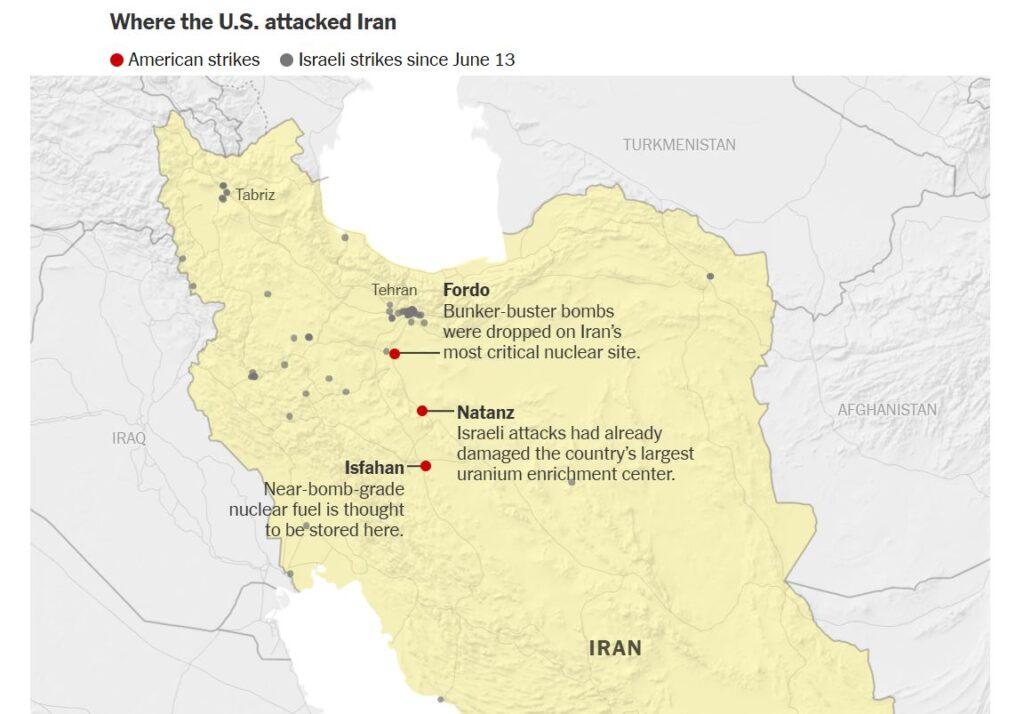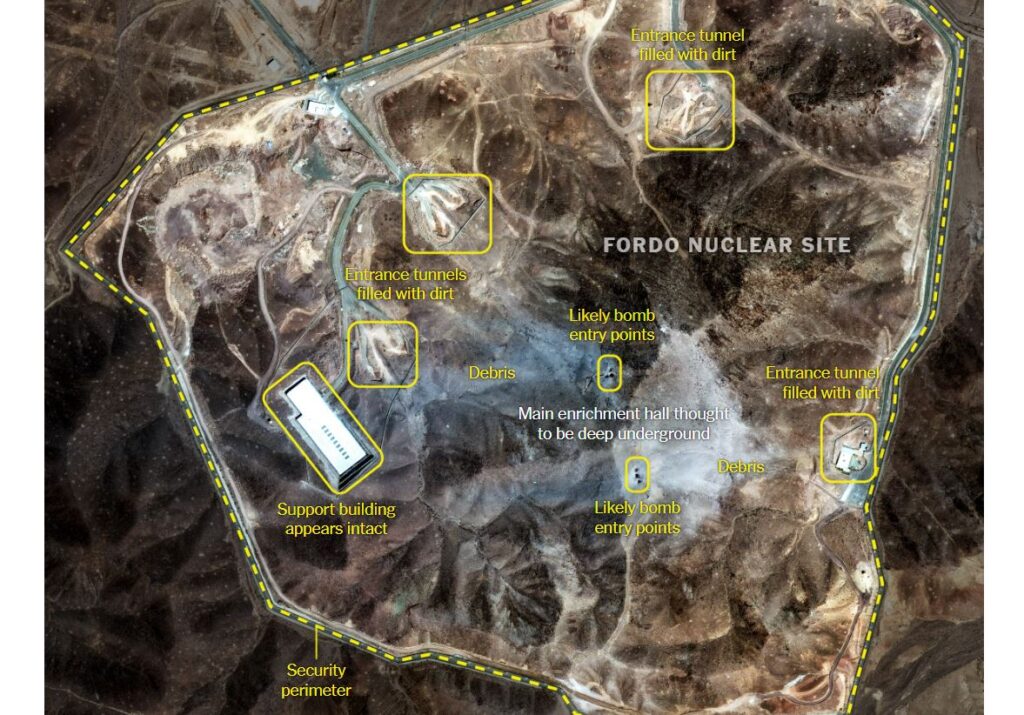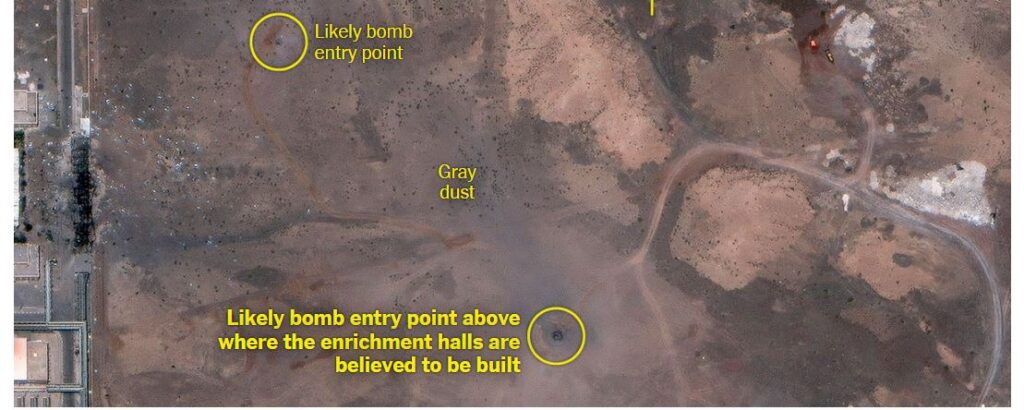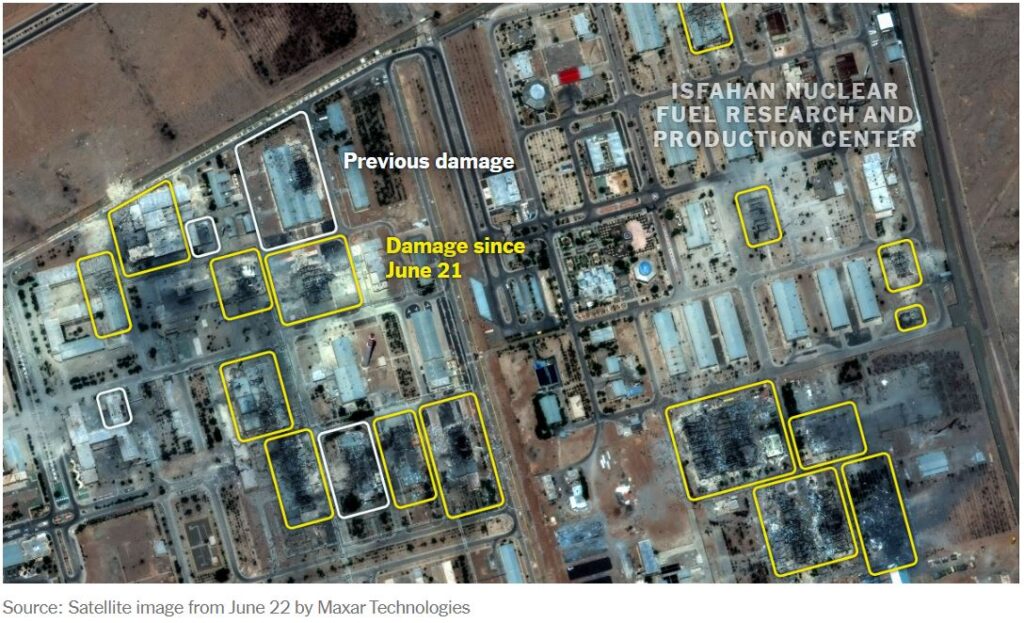Satellite Photographs Reveal Destruction at Iranian Nuclear Facilities
The United States bombed three important Iranian nuclear facilities overnight on Saturday. According to Pentagon officials, the locations had suffered “extremely severe damage and destruction” on Sunday.
According to authorities, the Fordo nuclear facility and facilities in Natanz were targeted by seven American fighter planes that launched several 30,000-pound bunker-busters. Additionally, an Isfahan location was struck by more than twenty cruise missiles launched from a Navy submarine.

According to authorities, it is still too early to tell whether Iran still has the capacity to create a nuclear weapon, and the whereabouts of its current inventory of enriched uranium is unknown.
The New York Times examined satellite images of the three nuclear sites that were targeted by the United States to determine the amount of damage.
Fordo
Iran’s most important nuclear enrichment site is in Fordo, which is located far within a mountain to protect it against attacks.
Shortly after the U.S. attack on Fordo, new satellite images show potential entry points for the American bunker-buster bombs as well as the destruction they caused. The images show obvious changes in the ground’s appearance and gray dust close to the potential hit sites.

The American strike on the heavily fortified Fordo site did not destroy it, but it did cause significant damage, rendering it “off the table,” according to a top U.S. official. The individual said that not even a dozen bunker-busting bombs might be able to bring the location down.
According to a New York Times assessment of satellite photographs, the United States specifically targeted Fordo at the precise locations of two buildings that experts claimed could be ventilation shafts.

The location was evacuated “a long time ago” in preparation for assaults, according to an Iranian legislator’s social media message.
Natanz
The Israeli army had previously attacked Natanz, the location of Iran’s biggest uranium enrichment facility, several times. Satellite images from June 22 indicate that the U.S. attack seems to have focused on the complex’s subterranean enrichment chambers, as evidenced by two craters above the suspected site of those structures.


On the first day of the Israeli strikes, June 13, Natanz’s aboveground infrastructure was hit. Three days later, the International Atomic Energy Agency reported that the attacks had destroyed the plant’s electrical infrastructure and that the centrifuges may have been harmed by the power outage as well.
Isfahan
It is believed that a compound outside the old capital of Isfahan houses nuclear fuel that is almost as good as a bomb. Several aboveground structures throughout the complex are seen to have been destroyed in recent satellite images taken after the U.S. bombings.

Although it was unclear if Iran moved those supplies in recent days, as some Iranian officials claimed, international inspectors saw fuel supplies at the site as recently as two weeks ago.
Unless there are undiscovered parallel facilities, significant harm might postpone the Iranian nuclear program for years.
The Israeli military had previously targeted laboratories at the facility that attempt to transform uranium gas into the form necessary to manufacture an actual weapon. According to the Israeli military and an Iranian state-affiliated news source, Israeli fighter jets attacked the site once more on June 21, prior to the U.S. bombing.




























